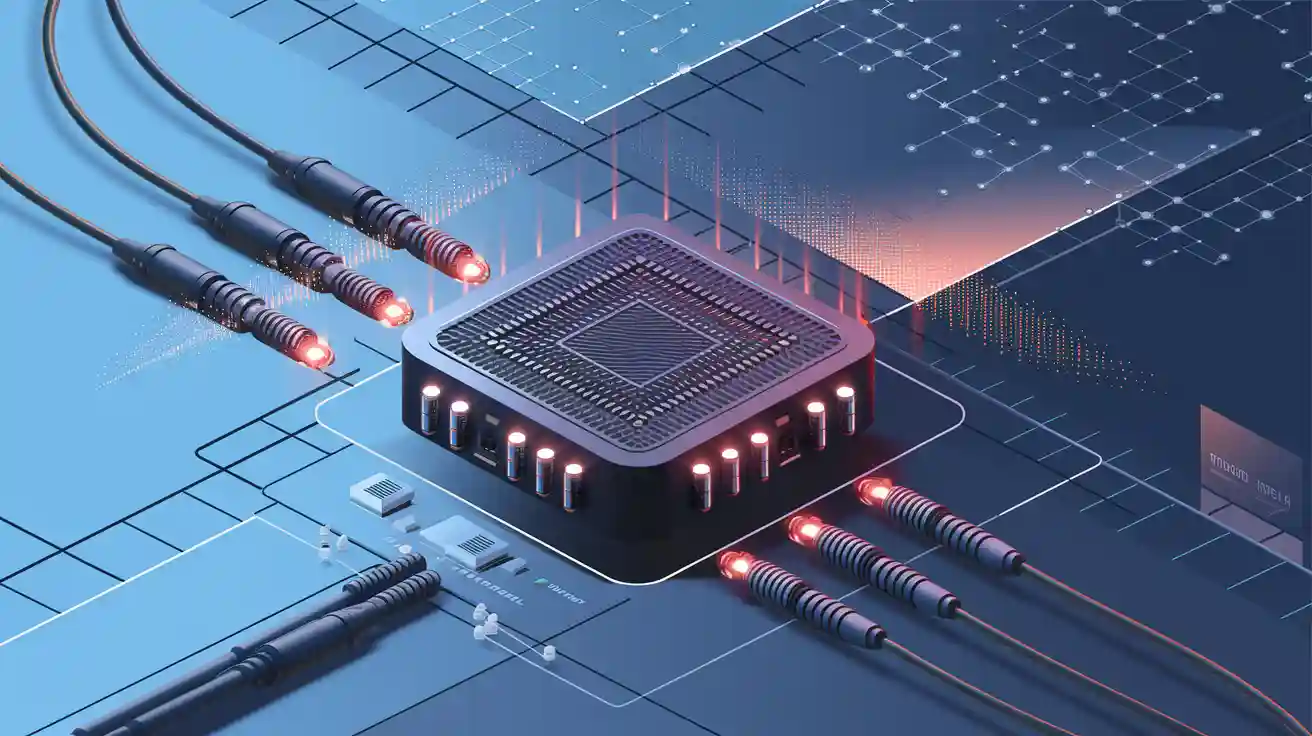
SFP and SFP+ transceivers are essential components for modern networks. These small, plug-in devices connect switches or routers to ensure smooth communication. SFP transceivers operate at speeds of up to 1 Gbps, while SFP+ transceivers are faster, capable of handling up to 10 Gbps. They are particularly beneficial for data-intensive tasks, such as cloud computing. The demand for SFP and SFP+ transceivers is increasing due to the expansion of data centers and the rollout of 5G technology. LINK-PP manufactures high-quality transceivers to meet various network requirements.
Speed and Performance Differences

Data Rates and Transmission Speeds
SFP and SFP+ transceivers also differ in data speeds. SFP transceivers work at speeds up to 1 Gbps. They are great for basic tasks like 100Base or 1000Base applications. SFP+ transceivers are faster, reaching speeds up to 10 Gbps. These are perfect for jobs needing quick data transfer.
SFP+ transceivers are also better for long distances. They can send data up to 120 km, while SFP ranges from 100 m to 100 km. SFP+ uses less power, making it more energy-efficient. Here's a quick look at their features:
Module | SFP (Small Form-factor Pluggable) | SFP+ Small Form-factor Pluggable plus (standard form) |
|---|---|---|
Data rate (M-Mbps, G-Gbps) | 155M/622M/ | 6G/8.5G/10G |
Type, Modulation | Dual fiber | Dual fiber |
Distance / Wavelengths | 500m/2km/ | 220m/300m/ |
Choosing between SFP and SFP+ depends on your needs. If you need faster speeds and longer distances, SFP+ is the better choice.
Compatibility and Use Cases
Backward Compatibility of SFP and SFP+ Transceivers
When picking between SFP and SFP+, think about compatibility. SFP+ transceivers can work in SFP slots. But they will only run at SFP’s slower speed of 1 Gbps. You cannot use an SFP transceiver in an SFP+ port for 10 Gbps speeds. This makes SFP+ a good choice for upgrading networks without replacing all devices.
Dual-rate SFP+ transceivers are even more useful. They support both 1 Gbps and 10 Gbps speeds. This makes them great for networks with mixed needs. You can grow your network easily without spending too much or causing long downtimes.
Typical Applications for SFP
SFP transceivers are best for simple networking jobs. They are used in banks for safe data transfers and backups. For example, a bank in Minneapolis used SFP transceivers to link branches to data centers. This helped them follow rules and stay secure. A fintech company in Atlanta used SFP transceivers to speed up trading systems with low delays.
Here’s how SFP transceivers are used:
Location | Application Description |
|---|---|
New York City | Faster trading and better efficiency for an investment bank. |
Boston | Improved backup systems for a financial services company. |
Chicago | Quicker trade processing for a financial exchange. |
San Francisco | Flexible cloud services for a fintech startup. |
Typical Applications for SFP+ Transceivers
SFP+ transceivers are great for high-speed tasks. They are used in data centers for sending data far distances. They also work in telecom for fast voice and video. In factories, they help with flexible connections.
Here are some examples:
High-speed computing with single-mode fiber for up to 10 km.
Short links using Direct Attach Cable (DAC) for up to 10 meters.
Medium distances with multimode fiber, reaching up to 400 meters.
Long-distance data transfer over 400 meters with long-range SFP+ modules.
These uses show how flexible SFP+ transceivers are. Their hot-swapping feature makes upgrades easy with little downtime.
Physical and Technical Specifications

Design and Form Factor of SFP and SFP+
SFP and SFP+ modules look almost the same. Both are small and easy to plug in or replace. But their abilities are different. SFP modules can handle speeds up to 1 Gbps. SFP+ modules are faster, reaching up to 16 Gbps. This makes SFP+ better for fast tasks like in data centers.
Power Consumption Differences
SFP+ modules use less power than SFP ones. This makes them more energy-efficient. Saving energy is important in big networks where costs add up. As networks grow, power use increases from SFP to QSFP modules. SFP+ balances speed and energy use better than QSFP.
Choosing Between SFP and SFP+
Things to Think About When Choosing
Here are important points to consider:
Data Rates: Check how much speed your tasks need. SFP supports up to 1 Gbps, while SFP+ can go up to 10 Gbps or more.
Compatibility: Make sure the transceiver works with your current devices. SFP+ fits in SFP slots but runs slower there.
Environment: Pick transceivers that suit your network's physical setup.
Cost: Think about both the price now and future costs. SFP+ costs more but is better for growing networks.
💡 Pro Tip: LINK-PP provides dependable SFP and SFP+ transceivers for various needs. Their products are built to last and perform well in any network.




